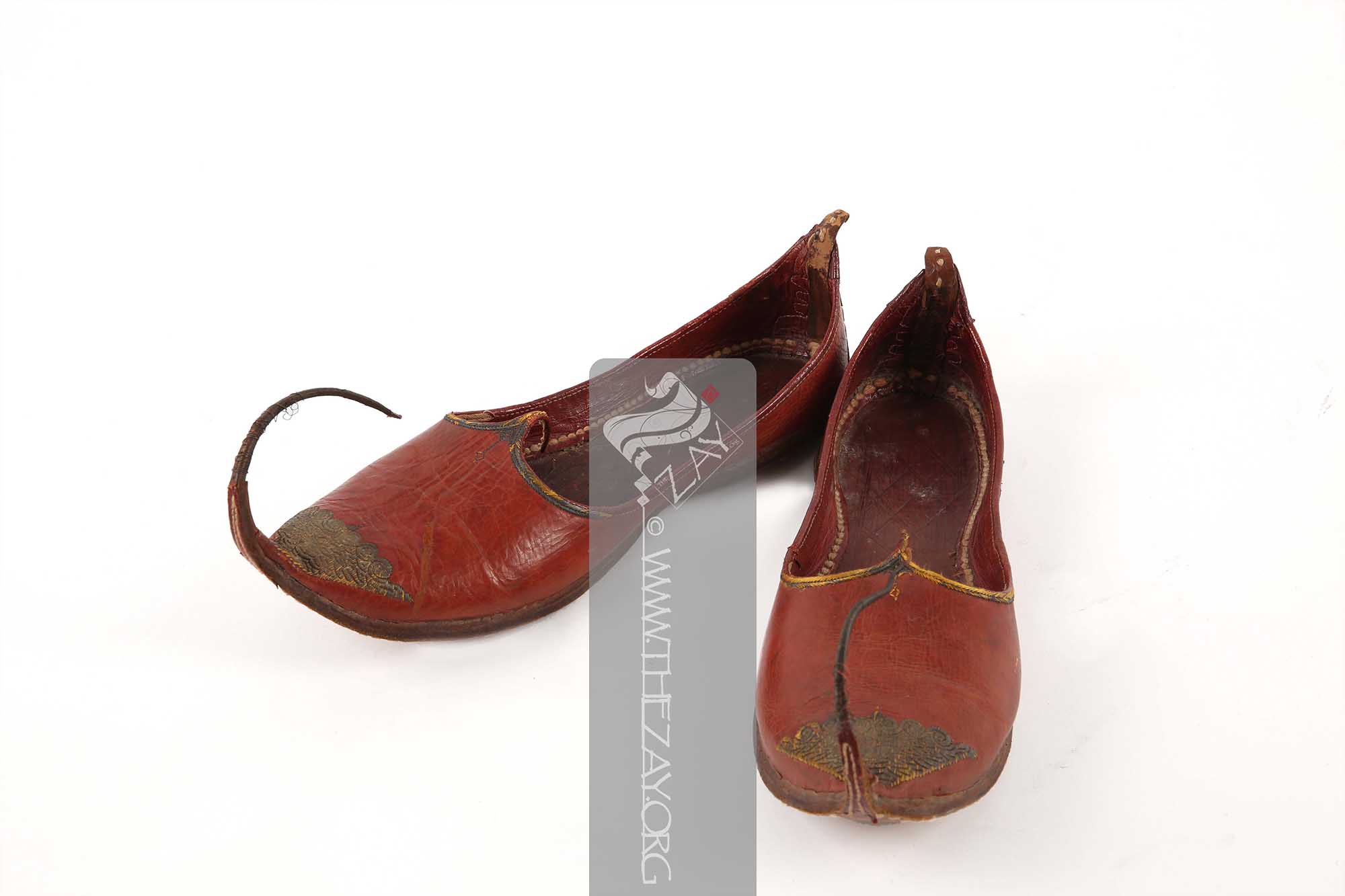Object NotePart of a lot purchased together which includes a woman’s ensemble –blouse, pair of trousers and a jacket (
ZI2020.500741 ASIA,
ZI2020.500741a ASIA,
ZI2020.500741b ASIA) and six other pieces not related to the ensemble (
ZI2020.500741c ASIA,
ZI2020.500741d ASIA,
ZI2020.500741e ASIA,
ZI2020.500741f ASIA,
ZI2020.500741g ASIA,
ZI2020.500741i ASIA).
Object HistoryThis pair of tanned leather shoes was purchased by
Dr. Reem Tariq
Ṭariq: (Arabic; Synonym: tulle_bi_talli
Tūlle_bi_tallī: (French: Tulle – a city in France where fine material for veil was first made; Turkish: tel – wire; Synonym: tariq; talli; badla; khus_dozi ), series of small metal knots made on a woven net ground as embellishment. The term is commonly used in the North African Arab region specifically in Egypt.
; talli; badla; khus_dozi ), series of small metal knots made on a woven net ground as embellishment. The term is commonly used in the Levant Arab region specifically in Lebanon.
El Mutwalli
Dr. Reem Tariq
Ṭariq: (Arabic; Synonym: tulle_bi_talli
Tūlle_bi_tallī: (French: Tulle – a city in France where fine material for veil was first made; Turkish: tel – wire; Synonym: tariq; talli; badla; khus_dozi ), series of small metal knots made on a woven net ground as embellishment. The term is commonly used in the North African Arab region specifically in Egypt.
; talli; badla; khus_dozi ), series of small metal knots made on a woven net ground as embellishment. The term is commonly used in the Levant Arab region specifically in Lebanon.
el Mutwallī: Founder (CEO) of the Zay
Zay: (Arabic: costume, Pl. azyaā’), a set of clothes in a style typical of a particular country or historical period. Initiative, a public figure, speaker and author. An expert curator and consultant in Islamic art and architecture, interior design, historic costume, and UAE heritage. from Kerry Taylor Auctions, London in 2020 to be added to The
Zay
Zay: (Arabic: costume, Pl. azyaā’), a set of clothes in a style typical of a particular country or historical period. Initiative Collection.
Object Features This is a pair of tanned leather slip-ons or traditional loafer-style Indian shoes (
jutti
Jutti: (Punjabi) Traditional Indian loafer style closed slip-on footwear with pointed and curled up toes, with close resemblance to ancient Egyptian footwear. The term is also used colloquially in the UAE. )for men with pointed and curled toes.
Embellished with copper and possibly silver metal wired threads, the toes of the shoes feature an abstract wave-like design while the edge of the toe vamp features a thin line of herringbone and arrowhead style design embroidered with metal wire thread.
The heel counter and backstay have an additional leather patch in a (
palmette
Palmette: (French: Palmette – Small palm, synonym Greco-Roman: Anthemion), a decorative element, motif, or ornament particularly pertaining to designs of architecture and decorative arts that has radiating petals resembling a palm leaf. It is believed to have originated in ancient Egypt and had subsequently reached far and wide. ) like shape that has been separately cut and sewn on the shoe.
This piece is possibly from the Sindh region of the subcontinent and judging from its embellishment and other accompanying articles it could have been part of a fairly affluent Muslim groom and his men’s wedding attire.
Links 




